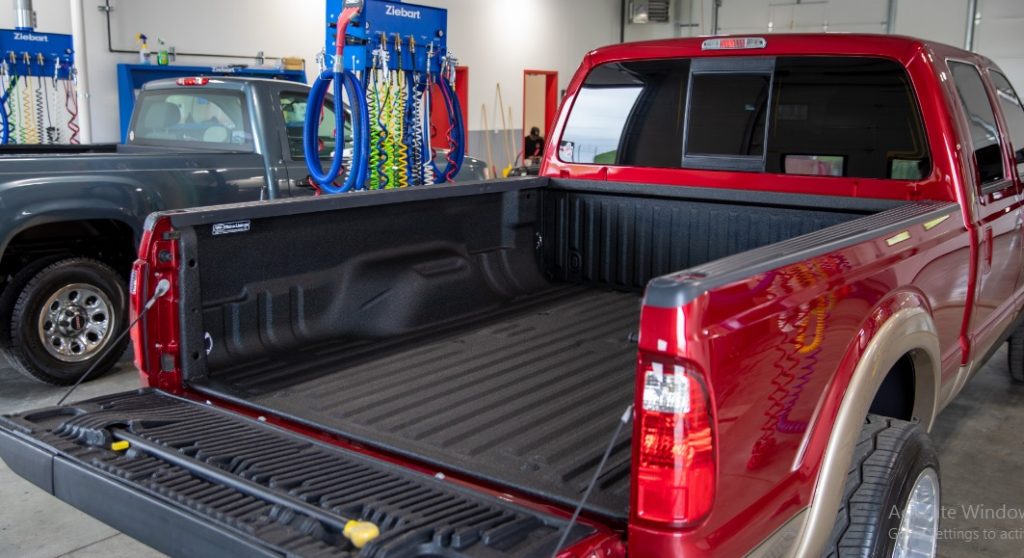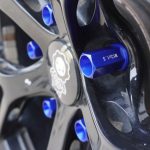When it comes to enhancing the functionality and aesthetics of your vehicle, the question of whether you can spray bedliner over sound deadener is a significant consideration. Car enthusiasts and DIYers alike are keen on discovering the potential of combining these two automotive elements. In this comprehensive guide, we’ll take a deep dive into the intricacies of spraying bedliner over sound deadener, offering not only tips and techniques but also a wealth of related information to ensure you’re well-equipped for your automotive project.
Understanding the Synergy of Bedliner and Sound Deadener
Material Compatibility:
The foundation of a successful application lies in understanding the materials involved. Most sound deadeners are made of butyl or asphalt-based materials, while bedliners come in various formulations like polyurethane, polyurea, and even epoxy. It’s crucial to choose a bedliner that complements the type of sound deadener you’re working with to ensure a harmonious integration.
Adhesion Dynamics:
Ensuring proper adhesion between the bedliner and sound deadener is paramount. The adhesive properties of the bedliner need to form a strong bond with the sound deadener for longevity and effectiveness. A mismatch in adhesion can lead to peeling or compromised performance.
Steps to Achieve a Seamless Application
Surface Preparation:
Begin your project by meticulously preparing the surface. Remove any contaminants, old coatings, or residue from previous applications. A clean and well-prepared surface sets the stage for optimal adhesion.
Choosing the Right Bedliner:
Not all bedliners are created equal, and selecting the right one for your project is crucial. Consider factors such as the type of sound deadener, the surface you’re coating, and the specific requirements of your application.
Testing Compatibility:
Before committing to a full-scale application, conduct a small test in an inconspicuous area. This allows you to assess the compatibility of the bedliner with the sound deadener and ensures that the desired results will be achieved.
Proper Mixing:
Follow the manufacturer’s guidelines for mixing the bedliner. Consistency in mixing is vital to achieving uniformity in application. Deviating from the recommended ratios can lead to issues such as uneven texture or incomplete curing.
Application Techniques:
The application process is an art in itself. Employ even and consistent strokes to achieve a smooth and uniform finish. Pay attention to the thickness of the applied bedliner for both protection and aesthetic appeal.
Drying and Curing:
Patience is key during the drying and curing phase. Rushing this step can result in bubbling, uneven surfaces, or incomplete curing. Follow the recommended drying times to ensure a robust and long-lasting finish.
Addressing Common Challenges for a Flawless Finish
Peeling or Flaking:
If you notice signs of peeling or flaking, it’s an indication of poor adhesion. Revisit the surface preparation and application steps to identify and rectify any issues that may be compromising the bond between the bedliner and sound deadener.
Uneven Texture:
Achieving a smooth texture requires attention to detail during application. Take your time, and if needed, practice on a small section before tackling the entire surface. This ensures a consistent and visually appealing result.
Compatibility Issues:
In the case of compatibility concerns, don’t hesitate to seek guidance from professionals or reach out to the manufacturers of the products involved. They can provide insights and recommendations based on their expertise.
Exploring the Benefits of the Bedliner and Sound Deadener Combo
Enhanced Insulation:
The combination of a quality sound deadener and a protective bedliner contributes to improved insulation within the vehicle. Reduced noise and vibrations create a more comfortable driving experience.
Corrosion Protection:
Bedliners are renowned for their corrosion-resistant properties. Applying them over sound deadeners not only enhances protection but also adds an extra layer of defense against rust and environmental elements.
Customization Options:
Many bedliners come in various colors and textures, allowing for customization that goes beyond functionality. Personalize your vehicle’s interior or exterior with a bedliner that suits your style. (See Also: Can You Powder Coat an Engine Block? Exploring Pros, Cons, and Expert Tips)
Expert Tips for Perfectly Spraying Bedliner Over Sound Deadener
Achieving a flawless result when spraying bedliner over sound deadener requires more than just the right products. Here are some expert tips to elevate your automotive project to the next level.
1. Surface Prepping Mastery:
Before reaching for that spray gun, invest time in thorough surface preparation. Remove old coatings, clean diligently, and ensure a pristine canvas for optimal adhesion.
2. Choose the Right Bedliner Formula:
Different bedliner formulations exist, each with its unique properties. Tailor your choice to complement the specific type of sound deadener you’re working with for a synergistic application.
3. Conduct Compatibility Tests:
Don’t skip the compatibility test. Apply a small amount in an inconspicuous area to ensure the bedliner adheres seamlessly to the sound deadener without any undesirable reactions.
4. Strategic Application Techniques:
Employing the right application techniques is an art. Use even strokes, maintain consistency, and pay attention to detail. This ensures an even texture and professional finish.
5. Prioritize Proper Mixing:
Follow the manufacturer’s instructions for bedliner mixing diligently. Consistency is crucial, so measure and mix accurately to avoid issues like uneven textures or incomplete curing.
6. Gradual Layering for Thickness:
Rather than rushing, apply bedliner in gradual layers to achieve the desired thickness. This approach not only enhances protection but also contributes to a smoother overall finish.
7. Optimal Drying and Curing Time:
Exercise patience during the drying and curing process. Rushing this phase can lead to bubbling or incomplete curing, compromising the longevity and performance of the bedliner.
8. Address Peeling Immediately:
If you notice any signs of peeling or flaking, address the issue promptly. Investigate the root cause, whether it be poor adhesion or surface preparation, and rectify it before proceeding.
9. Practice on a Small Section:
Before tackling the entire surface, practice your application technique on a small, inconspicuous section. This ensures you’re comfortable with the process and helps avoid any surprises.
10. Consult with Professionals:
In case of uncertainties or compatibility issues, don’t hesitate to consult with professionals or reach out to the manufacturers. Their expertise can provide valuable insights tailored to your specific project.
11. Enhance Insulation with Layering:
For improved insulation, consider layering sound deadener and bedliner strategically. This combination enhances the reduction of noise and vibrations within the vehicle.
12. Prioritize Safety Gear:
Always prioritize safety. Use appropriate personal protective equipment (PPE) when working with bedliner products to safeguard yourself from potential hazards. (See Also: Will Clear Coat Dry Without Hardener? Tips for Successful Coating)
13. Regular Maintenance Checks:
After the application, conduct regular maintenance checks. Address any wear or damage promptly to extend the lifespan of the bedliner and maintain its protective properties.
14. Explore Customization Options:
Take advantage of bedliner’s versatility. Explore different colors and textures to not only protect your vehicle but also add a personalized touch to its interior or exterior.
15. Enjoy the Process:
Lastly, enjoy the process of transforming your vehicle. The combination of sound deadener and bedliner is a powerful way to upgrade your ride, and the journey should be as rewarding as the final result.
With these expert tips in your arsenal, you’re well-equipped to tackle the challenge of spraying bedliner over sound deadener with confidence and precision. Happy spraying!
Frequently Asked Questions About Spraying Bedliner Over Sound Deadener
When it comes to enhancing your vehicle with a combination of bedliner and sound deadener, questions are bound to arise. Let’s address some of the most common queries to ensure you embark on your automotive project with clarity.
1. Can You Apply Bedliner Over Existing Sound Deadener?
Absolutely. However, ensure the existing sound deadener is in good condition, free from damage or contaminants. Thoroughly clean the surface before applying the bedliner for optimal adhesion.
2. What Type of Bedliner is Best for Sound Deadener?
Polyurethane or polyurea-based bedliners tend to work well with most types of sound deadeners. Choose a formulation that complements the specific material of your sound deadener for optimal compatibility.
3. How Long Does It Take for Bedliner to Dry and Cure Over Sound Deadener?
Drying times can vary based on the product and environmental conditions. On average, allow at least 24 hours for the bedliner to dry before exposing it to additional elements. Full curing may take a few days, depending on the formulation.
4. Can I Apply Bedliner Over Sound Deadener in Cold Weather?
Yes, but consider the manufacturer’s guidelines for temperature requirements. Cold weather may extend drying times, so ensure proper ventilation and provide additional curing time to achieve the best results.
5. Is Bedliner Over Sound Deadener Effective for Rust Prevention?
Absolutely. Bedliners are known for their corrosion-resistant properties. Applying them over sound deadener not only reduces noise but also adds an extra layer of protection against rust and environmental elements.
6. What Thickness Should I Aim for When Applying Bedliner Over Sound Deadener?
The ideal thickness depends on the specific bedliner product and application. Follow the manufacturer’s recommendations for the number of coats and thickness to achieve both protection and a visually appealing finish.
7. Can I Paint Over Bedliner Applied on Sound Deadener?
Yes, you can paint over bedliner, but it’s crucial to use a paint that adheres well to the specific bedliner formulation. Always conduct a compatibility test before applying paint to ensure a seamless and durable result.
8. How Can I Prevent Peeling or Flaking of Bedliner Over Sound Deadener?
Proper surface preparation is key to preventing peeling or flaking. Ensure the surface is clean, free of contaminants, and follow the recommended application techniques to achieve optimal adhesion.
9. Is It Possible to Remove Bedliner Applied Over Sound Deadener?
While removing bedliner can be challenging, it’s not impossible. Use appropriate solvents or mechanical methods for removal. Keep in mind that it may require considerable effort, so weigh the decision carefully. (See Also: Can You Use Self Etching Primer on Plastic? A Guide to Proper Application)
10. Can I Apply Bedliner Over Sound Deadener on the Exterior of My Vehicle?
Yes, bedliner is suitable for exterior applications, providing additional protection against scratches, dings, and environmental elements. Ensure the product you choose is formulated for exterior use and can withstand UV exposure.
11. What Precautions Should I Take When Spraying Bedliner Over Sound Deadener?
Wear appropriate personal protective equipment (PPE), including gloves and a mask, to protect yourself from fumes and potential skin irritation. Work in a well-ventilated area to minimize inhalation risks.
12. Can I Use Bedliner Over Damaged Sound Deadener?
It’s not advisable to apply bedliner over damaged sound deadener. Repair or replace damaged sections before applying the bedliner to ensure a smooth and even surface.
13. Does Bedliner Impact the Effectiveness of Sound Deadener?
When applied correctly, bedliner should not significantly impact the effectiveness of sound deadener. In fact, it can enhance the overall performance by providing an additional layer of protection.
14. Can I Mix Different Brands of Bedliner and Sound Deadener?
While it’s generally recommended to stick to the same brand for both bedliner and sound deadener, compatibility tests can be conducted when mixing different brands. Always follow the manufacturer’s guidelines for the best results.
15. Is Professional Assistance Necessary for Applying Bedliner Over Sound Deadener?
While many DIYers successfully undertake this project, seeking professional advice or assistance can be beneficial, especially if you encounter challenges or are unsure about compatibility issues.
Navigating the realm of spraying bedliner over sound deadener can be complex, but armed with these FAQs and answers, you’re better equipped to tackle your automotive project with confidence and expertise. Happy upgrading!
Conclusion: Transforming Your Vehicle with Confidence
In conclusion, the prospect of spraying bedliner over sound deadener offers a world of possibilities for automotive enthusiasts and DIYers alike. By understanding the intricate dynamics of material compatibility, adhesion, and application techniques, you can embark on this journey with confidence.
Whether you’re aiming for enhanced insulation, corrosion protection, or a customized look, the synergy between bedliner and sound deadener can be a game-changer. Remember, the key to success lies in meticulous preparation, careful product selection, and patience during the application and curing process.
So, gear up, take your time, and enjoy the process of transforming your vehicle into a personalized and well-protected automotive masterpiece. With the right knowledge and a dash of creativity, the possibilities are endless!



